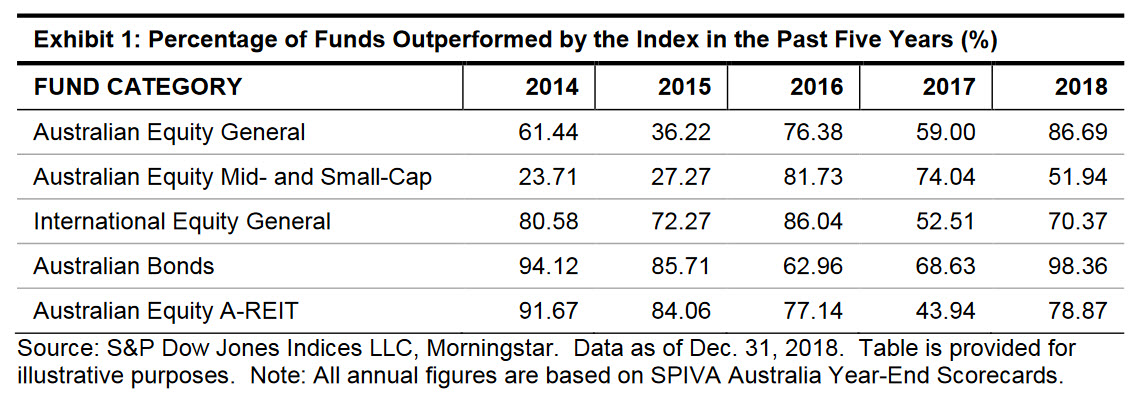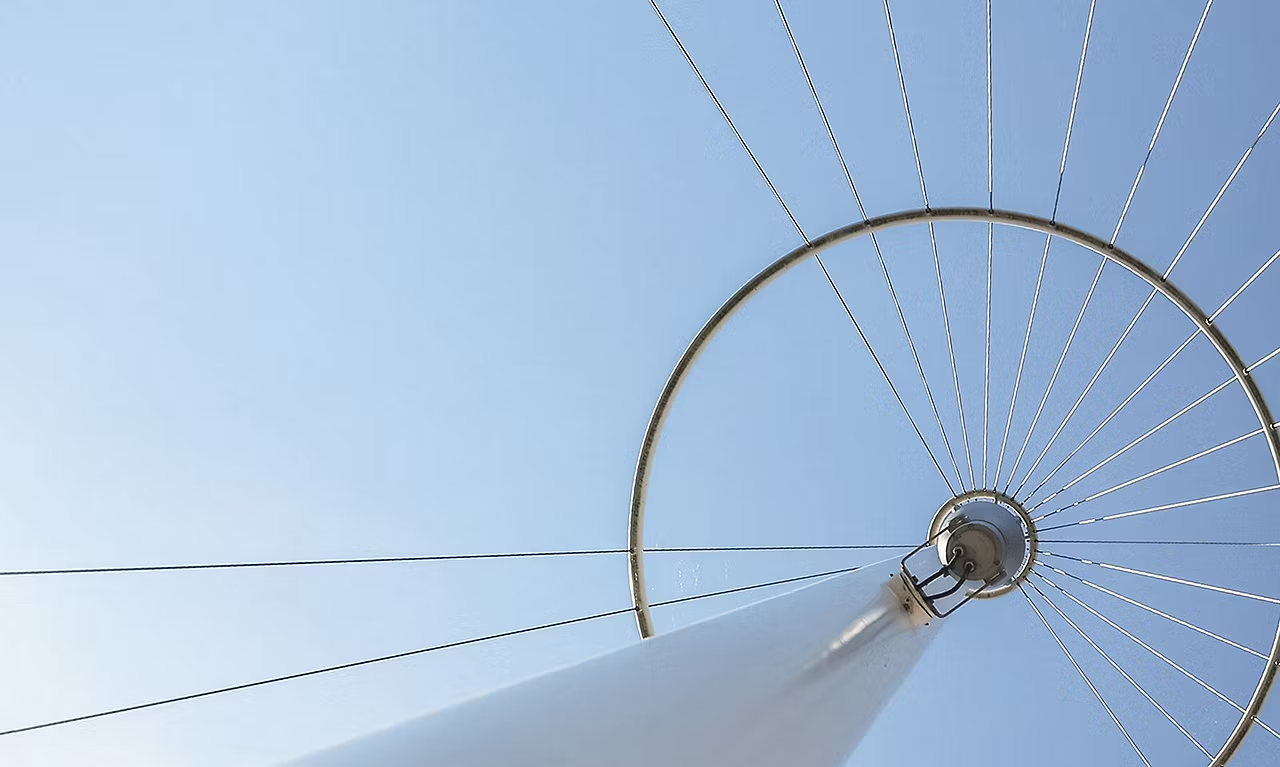SUMMARY
- S&P Dow Jones Indices has been the de facto scorekeeper of the ongoing active versus passive debate since the first publication of the SPIVA U.S. Scorecard in 2002. Over the years, we have built on our 16 years of experience publishing the report by expanding scorecard coverage into Australia, Canada, Europe, India, Japan, Latin America, and South Africa.
- The SPIVA Australia Scorecard reports on the performance of Australian active funds against their respective benchmark indices over 1-, 3-, 5-, 10-, and 15-year periods.1 In this scorecard, we evaluated returns of over 860 Australian equity funds (large, mid, and small cap, as well as A-REIT), 436 international equity funds, and 116 Australian bond funds.
- In 2018, apart from the Australian mid- and small-cap funds, the majority of Australian funds did not outperform their respective benchmarks and had worse relative performance than in 2017.
- There is no consistent trend in the yearly active versus index figures, but we have consistently observed underperformance for the majority of Australian active funds in most categories over the longer periods (5-, 10-, and 15-year periods).

- Australian Equity General Funds: In 2018, the S&P/ASX 200 recorded a loss of 2.84%, while Australian large-cap equity funds suffered bigger drawdowns of 6.29% and 5.81% on equal- and asset-weighted bases, respectively. On an absolute and risk-adjusted basis, 86.7% of funds failed to outperform the benchmark, and 4.0% of them were liquidated over the one-year period. Over the 5- and 10-year periods, 79.6% and 83.2% of funds underperformed the S&P/ASX 200 on an absolute basis, respectively.
- Australian Equity Mid- and Small-Cap Funds: Compared to large-cap equity funds, the mid- and small-cap funds delivered much better relative performance in 2018. The S&P/ASX Mid-Small dropped 7.98% in 2018, while the Australian mid- and small-cap funds recorded smaller losses of 7.95% and 6.95% on equal- and asset-weighted bases, respectively. On an absolute and riskadjusted basis, 51.9% and 45.7% of funds lagged the benchmark, respectively, with 8.5% of them being liquidated. Over the 5- and 10-year periods, 70.1% and 47.2% of funds underperformed the S&P/ASX Mid-Small on an absolute basis, respectively.
- International Equity General Funds: In 2018, 70.4% of international equity funds underperformed the S&P Developed Ex-Australia LargeMidCap on absolute and risk-adjusted bases. The international equity general funds posted an average loss of 0.55% (equal-weighted), while the S&P Developed Ex-Australia LargeMidCap recorded a gain of 1.84%. Over the 5- and 10-year periods, about 90% of funds in this category failed to beat the S&P Developed Ex-Australia LargeMidCap, making it the worst-performing fund category by benchmark-relative returns.
- Australian Bond Funds: The S&P/ASX Australian Fixed Interest 0+ Index recorded a gain of 4.54% in 2018, while the Australian bond funds gained 3.24% and 3.45% on an equal- and assetweighted basis, respectively. On an absolute basis, 98.4% of Australian bond funds underperformed the benchmark, but only 62.3% of funds underperformed on a risk-adjusted basis, as the majority of the bond funds had lower return volatility than the benchmark over the one-year period. No funds were liquidated in this category over the one-year period.
- Australian Equity A-REIT Funds: The S&P/ASX 200 A-REIT posted a gain of 2.91% and outperformed the S&P/ASX 200 by a significant margin in 2018. However, less than a quarter of Australian A-REIT funds managed to outperform the index on an absolute and risk-adjusted basis. Funds in this category posted returns of 0.03% and 0.79% on an equal- and asset-weighted basis, respectively, over the one-year period. Over the 5- and 10-year periods, 83.3% and 78.1% of funds underperformed the S&P/ASX 200 A-REIT on an absolute basis, respectively.
- Fund Survivorship: In 2018, 4.3% of Australian funds from all measured categories were merged or liquidated, with Australian bond funds recording a 100% survival rate and the Australian mid- and small-cap funds disappearing at the fastest rate (8.5%). Over the longer periods, only 80.6% and 57.7% of funds across all categories survived the 5- and 10-year periods, respectively, with international equity funds having the lowest survival rates for both periods.
- Average Fund Returns: Apart from the Australian mid- and small-cap funds, all fund categories recorded lower returns than their respective benchmarks for almost all measured periods on both an equal- and asset-weighted basis. International equity funds had the worst underperformance versus the benchmark for the 5-, 10-, and 15-year periods. Besides the Australian mid- and smallcap funds, all fund categories recorded higher asset-weighted returns than equal-weighted returns, indicating that larger funds tended to outperform smaller funds in these categories.














































